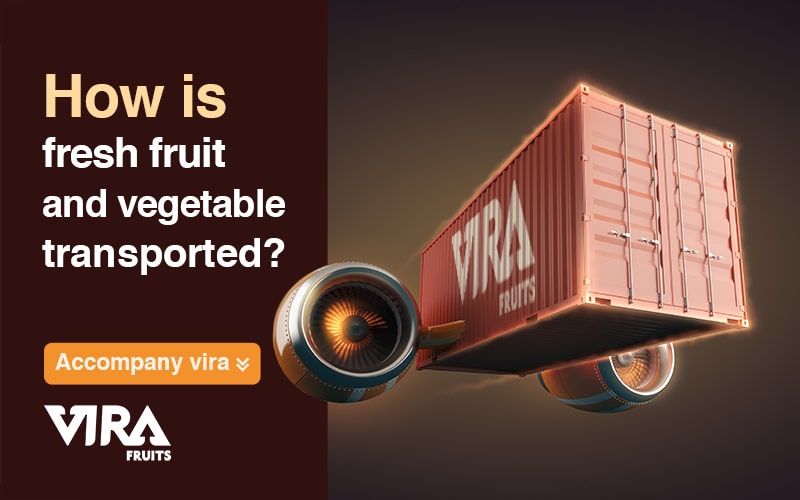Transporting fresh produce presents several business challenges and requires completeness and adherence to all sanitary regulations. There is a race to get the product to the store shelf as rapidly as possible from when it first begins to ripen. Also, several threats might jeopardize the nutritional value of fruits and vegetables. The unique requirements of fruit transportation help companies to transport them well. Here are the best requirements for transporting fresh produce.
Fresh produce definition
Fresh produce is fruits and vegetables that have not undergone any processing. When the word “fresh” appears on a product’s label or in another labeling that suggests or implies that the item is unprocessed, it refers to the food’s natural condition without any freezing, thermal processing, or other preservation methods.
Challenge of transporting fresh produce
Transporting fresh products has always faced many challenges due to sensitivities and perishability. Every year, many fresh products are lost during transportation and cause huge losses. Also, fruit or vegetables that have passed their prime may lose flavor and nutrients and even cause health problems.
These challenges need to be controlled by taking the appropriate actions. In the following, we have examined the solutions to prevent these problems.
Harvesting tips of fresh produce
harvesting fresh produce is the first and most important step in transporting it. This step is crucial in getting the customer fresh fruits and vegetables. Once produce no longer remains fresh, mold can begin to grow, and microorganisms that cause severe illnesses can start to appear.
Therefore, workers who pick the fruits should pay attention to factors such as color and firmness, and they also need to know when to pick the produce. Fresh produce transportation chains can be damaged if produce is picked at the wrong time. It is, therefore, necessary to train workers on when the right time is for harvesting and how to harvest. The following factors influence crop harvesting:
Fruits are best picked in the morning when the plants are still wet.
Produces should also be shaded to prevent drying.
To avoid unnecessary damage, always pick the fruit gently yet firmly.
Fresh produce should not be put in open storage for an hour. Fruit and vegetables that sit out for an hour lose up to a day in shelf life.
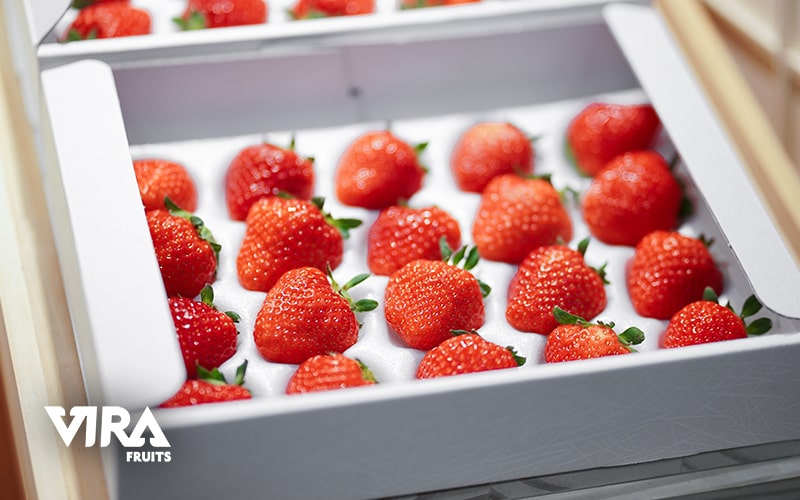
Packaging fresh produce
The second step after picking the fruits is their proper packaging for transportation. Packaging plays a vital role in the transport of fresh produces. Much fresh produce, including fruits, vegetables, and legumes, is exposed to damage and corruption with the slightest impact and temperature changes if they do not have adequate packaging that protects them from harm and corrosion. Similarly, pistachios should not be exposed to moisture, which can be prevented with proper packaging. However, this corruption and deterioration of food products negatively impact people’s health.
The type of packaging depends on the kind of fruit. Generally, fruits and vegetables are transported in cardboard and plastic bins. It is vital to ensure proper air circulation when transporting fresh products; they have built holes in these boxes. Fruits such as apples, oranges, and pears, which have harder skin, can be stacked in boxes and transported over long distances. While soft fruits such as peaches, tomatoes, plums, etc., should be packed in separate boxes, so they do not rot and bruise.
Produce like cauliflower is packed in plastic bags, while vegetables such as tomatoes, onions, and cucumbers are shipped in wooden or plastic crates or packets. Other fruits like watermelons are transported in trays. The sturdier fruits, like bananas, can be stacked in bunches, while pineapples are stacked upright with their leaves facing up.
As a whole, proper packaging protects fresh produce from pests and spoilage and ensures that produce keeps for longer periods, reduces the amount of waste generated, and maintains people’s overall health.

Choose the best mode of transportation for fresh produce.
The form of transportation, in addition to the distance, impacts the quality of fresh food items. There are different modes to transport food products: road transportation, railway transport, marine transport, and air transport.
road transportation
Road transport is used significantly around the world to transport fresh produce; this method is beneficial for short distances and places that are not accessible by other means of transport. In this method of transportation, open non-refrigerated trucks and refrigerated trucks are used, and refrigerated trucks are recommended because they maintain proper temperature and humidity.
Railway transportation
Road transportation usage is declining worldwide as compared to railway transportation. Even though it is less expensive than other options, this transportation system is slower. Refrigerated and insulated wagons are required for the transportation of fresh produce. Usually, rail transport is used for products that need to travel between two and three days.
Waterway transportation
Waterway transport is generally used for long journeys. It is the greenest, most efficient, and cheapest mode of transportation. The waterway transportation method is rapidly increasing worldwide due to transporting fresh produce in large quantities at a low cost. With all these advantages, Waterway transport is unsuitable for highly perishable products. But generally, refrigerated containers should be used to transport fresh perishable produce.
air transportation
Air transportation, which is done by passenger planes, is faster than other transportation methods. This method is suitable for transporting highly perishable fresh produce, although it is expensive and a small volume can be transported with it. Using refrigeration systems (Reefers) in air transportation for fresh products is necessary. Nevertheless, the refrigeration system used in air travel is weaker than other methods, so it is not highly recommended.
However, fresh produce can be transported only by one of the above methods or by combining different methods. Choosing the best transportation method can be influenced by various factors such as product type, geographical area, etc. For this reason, it is impossible to consider a general guideline for all transport of fresh produce.
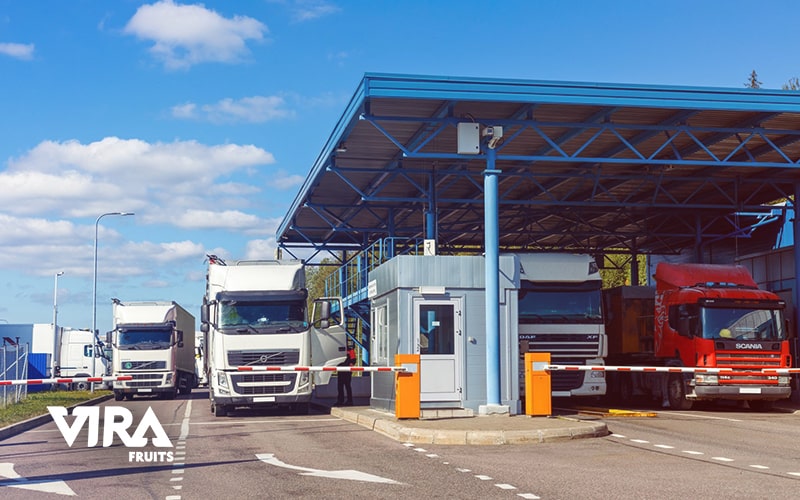
Inspection of the vehicle before loading
Inspection of the vehicle is one of the most important things for the safe transportation of fresh produce, based on the type of delivery.
Water standing on the ground is one of the most common things to look for during these inspections. Unrepaired cooling units can lead to high humidity, mold, and possible damage to the cooling system. If this occurs, the cooling unit or engine of the vehicle may have more serious problems.
Vehicles will be checked and examined carefully for any technical defects. Technical problems during a road trip put the vehicle at risk of accidents, stoppages, cargo damage, and delayed delivery. Therefore, it is very important to ensure the vehicle’s complete health. Once the products have been moved through the container, the container should be checked for any problems or defects.
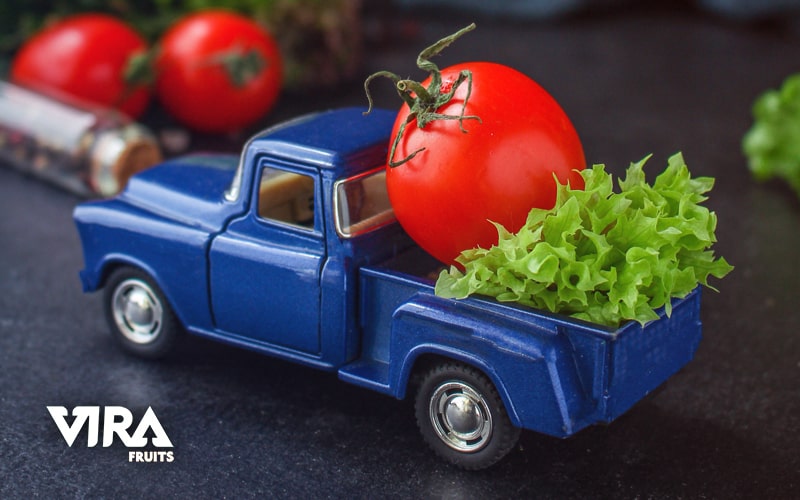
Loading the fresh produce
Basic loading is one of the most critical points in placing fresh fruits. Basic loading is one of the essential points in placing food products. As a result, here are some points to keep in mind during the loading process and afterward:
- Loading fresh produce should be done with caution by the workers. The same should be observed for fruits such as watermelon, apples, etc., which the impact can destroy.
- Transporting fresh fruits and vegetables requires that transporters use loading equipment such as belts, chains, and towing ropes to avoid problems and damage. Shock and vibrations during shipping can seriously damage the fresh fruit and vegetable if the items are not packaged and loaded properly.
- Transporters must be aware of the type of fruit they are shipping, as some fruit cannot be shipped together. As soon as a fruit is harvested, it releases a harmless gas called ethylene, and the amount released by each fruit varies. It is essential to keep certain fruits separated from those that release the gas in large quantities because they ripen and spoil more quickly when exposed to this gas.
- It is possible for a transportation company to overload a vehicle with too many pallets to reduce costs, which often causes damaged goods to be shipped. Therefore, do not load the vehicle beyond its capacity.
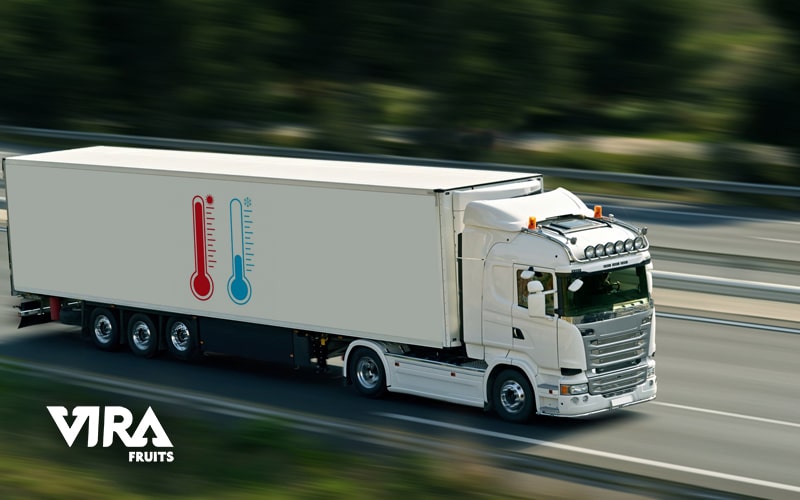
Control Temperature & humidity of fresh fruits
The temperature and humidity of fresh produce during transportation should be monitored carefully after choosing the best transportation method. As soon as the fruits and vegetables reach the final consumer, they are kept fresh by temperature and humidity control. These fresh produces must be transported at controlled temperatures in refrigerated containers to prevent the growth of bacteria and pathogens that grow at high temperatures. Several types of vehicles are used in road transportation, including Refrigerated trucks, sometimes called Reefers, which have been fitted with special refrigeration systems manufactured to keep refrigerated products fresh and safe during their journey.
As a result of their ability to maintain safe temperature limits throughout the shipping process, refrigerated vehicles are commonly used for shipping. A safe temperature range between 35 and 45 degrees is accepted for most fresh fruits and vegetables.
Oranges, grapes, and cherries should be stored at a temperature of 0 to 2 degrees Celsius and a humidity of 95% to 100%. On the other hand, items like garlic and onions require humidity levels between 65% and 75% since high humidity is harmful to them.
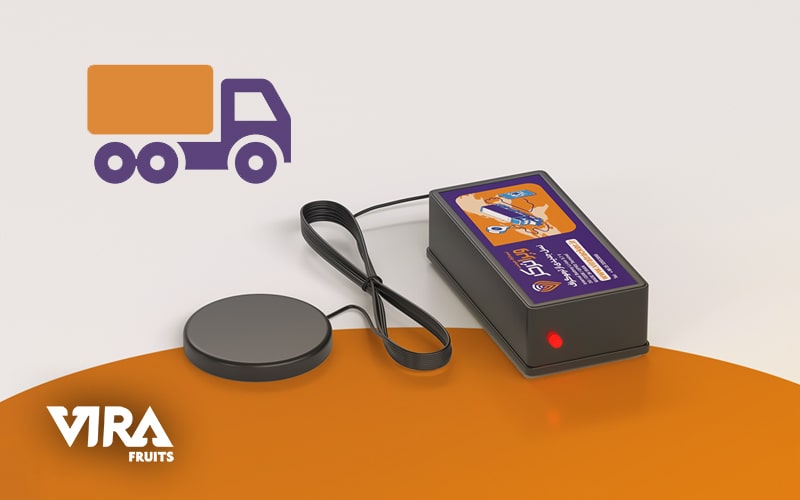
A cold environment can damage bananas, avocados, and mangoes, so they should be kept between 13 and 15 degrees Celsius, with humidity levels between 85% to 90%.
Since freshness parameters vary depending on the product and are specific, transporters may find it challenging to ensure their shipping conditions are optimized.
Although there are many concerns and challenges related to temperature and humidity changes in refrigerated containers during the transportation of fresh produce, however, new methods and technologies have been developed to minimize risks and improve quality.
A temperature and humidity data logger is one of these new tools for controlling temperature and humidity during transportation. Depending on the type of data logger used, some can provide online temperature and humidity values. In contrast, others store the data in their memory, and once the load arrives, the data can be retrieved via a computer or phone and saved in Excel or any other program.
The device will warn offline or online if the temperature or humidity exceeds the specified values. Data loggers that record offline send out a warning via a LED indicator or audio alert, while data loggers that record online send a warning via SMS or a special program. Therefore, this tool can easily monitor the product’s health during its journey and ensure that it reaches the final consumer safely.
In summary
The fresh produce we eat daily must go through extensive stages before it reaches our plates regularly. These stages consist of Harvesting tips of fresh produce, Packaging, Choosing the mode of transportation, Inspecting the vehicle before loading, Loading, and Controlling Temperature & Humidity.
